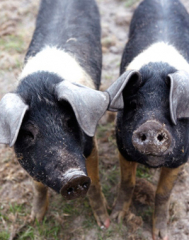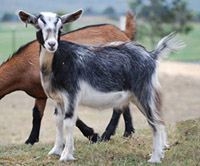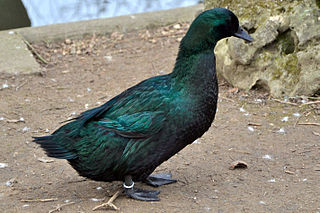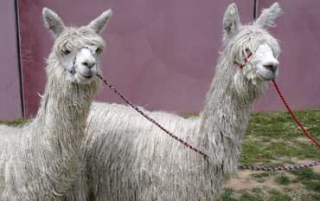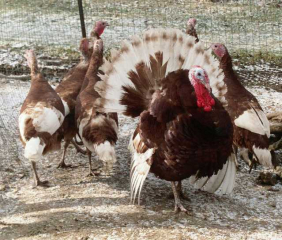I’ve been looking at different breeds and varieties of livestock, planning which ones we’ll get eventually. It started small, looking at cat breeds (I know, not really livestock, but I’ve wanted a kitten since I was six years old, and it’s pretty exciting that I can finally get one when we move into the new house. Once it’s built). Then, after a lengthy sidetrack into cat genetics, which is absolutely fascinating, I started looking at chickens. And ducks. And geese. Perhaps an alpaca, or even a llama. And fish, of course, in an aquaponics system. And goats. And turkeys. And maybe pigs.
They’re useful! And tasty. I feel guilty every time I eat pork or bacon, because I know that pigs are pretty intelligent and very social, and most pig farms keep them in horrific prison camp conditions. So the idea of raising a pig or two to turn into bacon is actually kinda appealing – knowing that they’ve had a stress-free, happy life full of whatever their piggy hearts desired (within reason), and they’ve eaten healthy food and haven’t been stuffed full of growth hormones and antibiotics is important to me. Also, pigs are really good at digging up compacted soil, in search of grubs and roots, and fertilising it.
I’m thinking we’ll start with some Transylvanian Naked Neck chickens, and maybe a few Silkies, and a couple’ve Plymouth Rocks and Indian Game hens (aka Cornish) to see how they go. A pair of Newby or Pixie miniature goats (I would love to get a Nigerian Dwarf goat, but they’re not available in Australia), or possibly Ango-Nubians, depending on what we think after meeting the breeders. I’ve met a few Ango-Nubians, and they’re gorgeous, but they produce more milk than I can easily get through, 3 – 4L per day. That’s a truckload of cheese-making. Two or three Pilgrim geese to help the goats keep the firebreaks mown, and because I could handle having goose to feast on occasionally. Goose is amazingly tasty.
Almost certainly ducks as well. I’m currently thinking about Cayuga ducks, which are apparently one of the best tasting ducks ever (they’re in the Slow Food movement’s Ark of Taste), and perhaps Welsh Harlequins. I’m also leaning towards perhaps maybe possibly keeping turkeys. The Bourbon Red is another Ark of Taste member breed, as is the somewhat smaller Royal Palm. Both are heritage breeds which can mate naturally and survive free range, and they’re both very pretty birds. Also, tasty.
As for the pigs, that’s a tough one. There are Australian miniature pigs, which only get to 60cm high at the shoulder and up to 90 Kg or so (compared to the 250 Kg or more of a full size pig). They’re sold as pets, but they’re just as edible as – and probably a lot more manageable than – regular size pigs. Or there are Wessex Saddleback pigs, which are a rare breed or full size pigs originally raised to free range in woodlands.
Any time I start reading about animal breeds & varieties, I inevitably end up reading a bit about their history, where they came from and what they were originally bred for. Without that information, it’s much harder to guess how well they’ll do in this climate, and how useful they’ll be to me, and what sort of care & management they’ll need. And then I get to the breeders’ websites, and from there I end up reading about their genetics. Maybe that’s odd or boring to some, but I am honestly fascinated by it. Every single animal that I start researching, I end up wanting to breed them.
When I started university, I was studying biotechnology. I’ve always been interested in biology, and the taste of genetics I got in high school biology classes was fascinating. But biotech was hard and boring – I thought we’d be making our own little transgenic glowing tobacco plants, but all we actually did was high level organic chemistry. I ended up dropping it in favour of IT (another field which links maths and art, amusingly enough). I think I missed my calling: farming. If I’d only thought of it, I might have realised that my interest in plant and animal genetics was a perfect lead in to horticulture or agriculture rather than biotech. It’s taken me this long to figure it out.
Image sources:
Wikimedia Commons: File:Barred_Rock_with_floppy_comb.jpg
Gourmet Magazine website: wessex saddleback pigs
Patona Park Miniature Goat Stud: Patona Park Just Devine
Wikimedia Commons: File: Domestic_duck_-Parc_de_la_Pepiniere,_Nancy,_France-8a.jpg
Tolendal Alpaca Stud: pair of suri alpacas
Porters Rare Heritage Turkeys: bourbon red breeding group
Wikimedia Commons: File:Naked_Neck_rooster.jpg

